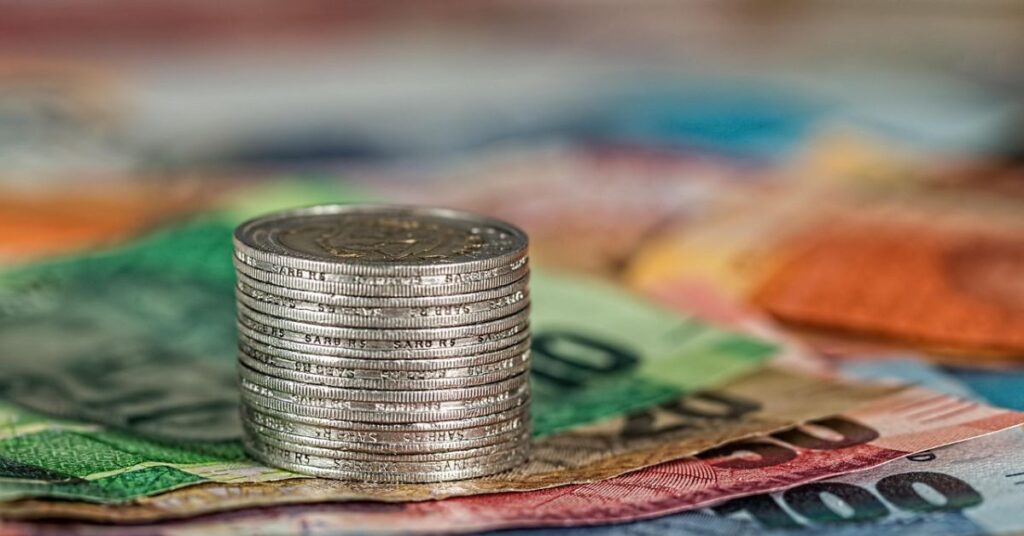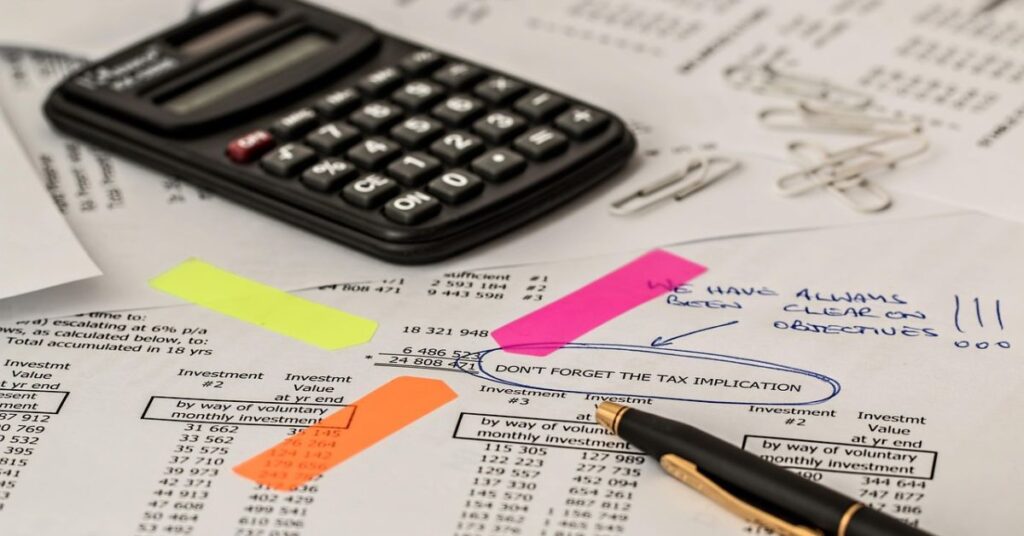Washington H. Soul Pattinson & Company Limited (ASX: SOL), known as Soul Patts, has one of the strongest dividend histories among all Australian listed companies. SOL has paid a semi-annual dividend over the past ten years and has usually increased the dividend payment each cycle.
The growth of the SOUL dividend has been driven by its diversified portfolio of investments—which includes exposure to property, healthcare, industrials, and other listed companies—combined with strong cash flow performance.
In this article, we will analyse how SOL ASX dividend history has grown over the past 10 years, discuss payout ratios, yields, and franked dividends, and explore what historical performance might suggest about future income returns for investors.
SOL ASX Dividend History – What Investors Should Know
When I look at the dividend history of a company like Washington H. Soul Pattinson and Company (SOL), listed on the ASX, I’m trying to get a feel for its reliability and how it might fit into my own income strategy. It’s not just about the amount paid out, but also the consistency and any tax implications, especially for us here in Australia.
Understanding SOL’s dividend payments gives a good insight into the company’s financial health and its commitment to returning value to shareholders.
Here’s what I typically look for:
- Dividend Payouts: How much has SOL paid out over the years? Are the payments steady, or do they fluctuate a lot?
- Franking Credits: This is a big one for Australian investors. Do SOL’s dividends come with franking credits? If so, how much? This can significantly impact the net return after tax.
- Dividend Growth: Has the company increased its dividends over time? This suggests a growing business and a potentially growing income stream for me.
- Yield: What’s the current dividend yield, and how does it compare to historical levels? A higher yield can mean more income, but I also need to consider if it’s sustainable.
It’s interesting to note that Australian companies, in general, tend to offer higher dividend yields compared to some international markets. For instance, the ASX 300 index has historically yielded around 5%, while a US S&P 500 tracker might be closer to 2%. This focus on dividends is partly why many Australian investors have a significant portion of their portfolio in local shares, sometimes referred to as ‘home bias’. While this can be beneficial, especially with franking credits, it’s also something to keep an eye on to avoid over-concentration.
Timeline of SOL ASX Dividend Payments Over the Past Decade
After reflecting on Washington H. Soul Pattinson and Company (SOL) over the previous 10 years, I have a record of their dividend payment history, which makes for an interesting time series. Overall, SOL has paid dividends consistently twice annually.
Here is a simple overview of the payments, but minor discrepancies may happen regarding different calendar years:
Early Year Payment—Usually around February or March;
Late Year Payment—Typically August or September;
The payments have a steady and consistent range of amounts made available to shareholders; however, the dollar amount gets ‘flipped’ around. The timing of money arriving is consistent, but the fluctuation of amounts across payments varies depending on the company’s performance. I have noticed periods when the company earnings of SOL were very strong, corresponding to slightly higher dividend payments made in the subsequent payment cycle.
This timeline is my qualitative observations based on a general pattern. For more specific or concerned calendar year details, it is better to check ASX official announcements or refer to the investor relations page for SOL.
Dividend Growth Rates & Trends in SOL ASX Dividend History

When analysing the dividend history for Washington H. Soul Pattinson (SOL), I’m interested in determining if the payouts have changed over time. I am looking for a change in not just the amount paid out in any year, but its regular pattern or trend. Are the dividends simply going up, down, or mostly unchanged?
Upon completion of our review, there is a sufficient dividend history in SOL, which is a good starting point. However, the past dividend growth rate is not only always linear. Every few years, you will have a decrease in dividends, some flat years, and some nice increases– this is typical for a cyclical company, or something exposed to the shifts of the broader industry.
Here’s a general idea of what I’ve observed:
- Steady Payouts: There have been periods where SOL maintained a consistent dividend payment, showing a degree of stability.
- Periods of Growth: I’ve also noted times where the dividend per share has seen a noticeable increase, suggesting the company was performing well and sharing that success with shareholders.
- Impact of Market Conditions: It’s clear that external factors, like commodity prices or the general economic climate, can influence the company’s profitability and, consequently, its dividend payouts. This means the trend isn’t always smooth.
It’s helpful to see this data laid out, perhaps in a simple table, to really grasp the year-on-year changes. Without that, it’s just a general impression. Understanding these trends helps me form an opinion on whether SOL is a reliable income-generating stock for the long term or if its dividend payments are too unpredictable for my needs.
Frequency and Consistency: How Regular Are SOL ASX Dividend Payouts
When I review the dividend history of Washington H. Soul Pattinson and Company Limited (SOL), I pay attention to how often they pay them out because it’s not only about the amount but also the rhythm of the payable dates. Typical of many Australian companies, especially those that have claimed to be established, SOL ASX has generally paid dividends twice a year. This pattern of paying dividends in 6-month intervals is relatively common for long-standing Australian companies. Typically, you can expect a dividend payment sometime in March and September in any given year (although those dates can shift a little). For example, the record date for a recent share scheme was set on Wednesday, 17 September 2025 and implemented on Tuesday, 23 September 2025. This gives us a decent frame of reference around the expected share performance and enough time to process your share gains as dividends.
Though the frequency of payment may be consistent, the dollar amounts may vary – primarily associated with the company’s performance and its policy decisions around dividends. In regard to the frequency of payment, it’d be wise to keep an eye on their announcements in case anything happens to shake things up.
- Semi-annual payments: Typically in March and September.
- Consistency: While the frequency is regular, the amount can fluctuate based on company performance.
- Investor expectation: This pattern aligns with many Australian investors’ preference for regular income.
Understanding the payment schedule helps in managing personal cash flow and reinvestment strategies. It’s a key part of how I plan my own investment income.
For those looking at broader market exposure, comparing this to international index trackers like VGS can highlight differences in dividend timing and policy. It’s all part of building a diversified portfolio that meets your income needs. You can find more details on dividend payments and company announcements on the ASX website.
Payout Ratio & Franking Credits in SOL ASX Dividend History
Whenever I examine the history of dividends for Washington H. Soul Pattinson and Company (SOL), I make sure to check their payout ratio, as well as the franking credits attached to dividends. The payout ratio refers to the percentage of earnings paid out as dividends. I am generally sceptical of dividends with payout ratios that are very high, since that indicates that the company is paying out a large proportion of its profit and has less left over to reinvest when navigating turbulent times. Therefore, the payout ratio gives me confidence in understanding the sustainability of dividends. A low payout ratio, on the other hand, indicates that there is the ability to grow dividends in the future.
For investors in Australia, franking credits are an exceptionally relevant consideration. Franking credits represent tax on profit that has already been paid by the company before paying dividends. When I receive a dividend with franking credits, I can then count those credits towards my own tax obligations. Franking credits can often make Australian shareholdings more tax-efficient than investments that do not receive franking credits with dividends, for instance. This is a large reason why many investors in Australia flock to Australian companies. This knowledge of the payout ratio, alongside levels of franking credits, builds more clarity into what my after-tax income may look like from SOL.
Here’s a general idea of how these might look over time, though specific figures would need to be checked against SOL’s annual reports:
- Payout Ratio: I’d look for trends. Is it generally stable, increasing, or decreasing? A stable ratio often indicates a mature, predictable business. An increasing ratio might signal growing confidence or a strategy to return more cash to shareholders. A decreasing ratio could mean the company is retaining more earnings for growth or facing tighter profit margins.
- Franking Credits: The level of franking credits can vary. While many Australian companies aim for full franking, sometimes this can change based on the company’s tax situation. It’s important to know if SOL has consistently provided fully franked dividends or if there have been periods of partial or unfranked dividends.
It’s worth noting that the benefit of franking credits depends on my individual tax rate. If I’m a higher taxpayer, the credits are more valuable. If I’m on a lower tax rate, I might even get a refund from excess franking credits, though this is less common. This system makes Australian dividend income potentially more attractive than it first appears, especially when compared to dividends from overseas investments, which often don’t have such a mechanism.Tax credits can reduce the tax paid on dividends from Australian companies, making income from local shares more attractive to some investors.
Dividend Yield: Historical Levels vs Current Yield for SOL ASX
When I analyse the dividend yield for Washington H. Soul Pattinson (SOL), it is interesting to compare the historical dividend yield with that which is currently being offered to investors. Typically, in Australia, while average dividend yield of Australian shares is more than that of international shares like SOL. For example, the ASX 300 index tracker (VAS) has commonly provided yields around 5%, compared to the US S&P 500 tracker (like VTS) with a yield around 2%. This is due, in part, to Australia’s heavy representation in sectors that typically correlate high profits to shareholders- like banking and mining.
For the record, I want to keep in mind that the historic yield is no guarantee of future yield, and it can be used as a guideline of how the company has tended to generate income in the past.
Here is a general idea of SOL’s yields in the last few years. Having looked at past yield may give me an indication- note that specific numbers will vary based on actual share price movements and actual dividend payouts: Note: The yields displayed here are for illustrative purposes, therefore actual yields will vary based on share price movements or actual dividend payments.
When I check the current yield, I’m looking at the most up-to-date information available. This gives me a snapshot of the income I could expect if I invested today, based on the latest dividend payments and the current share price. It’s this current yield that I’ll compare against the historical trends to see if SOL is currently offering a yield that’s higher, lower, or in line with what I might expect based on its past behaviour. This comparison helps me gauge whether the stock might be more or less attractive from an income perspective right now.
| Fiscal Year | Final Dividend | Interim Dividend | Total Annual Dividend |
| FY25 | $0.59 | $0.44 | $1.03 |
| FY24 | $0.55 | $0.40 | $0.95 |
| FY23 | $0.51 | $0.36 | $0.87 |
| FY22 | $0.58 | $0.29 | $0.87 |
| FY21 | $0.36 | $0.26 | $0.62 |
| FY20 | $0.35 | $0.25 | $0.60 |
| FY19 | $0.34 | $0.24 | $0.58 |
| FY18 | $0.33 | $0.23 | $0.56 |
| FY17 | $0.32 | $0.22 | $0.54 |
| FY16 | $0.31 | $0.21 | $0.52 |
| FY15 | $0.30 | $0.20 | $0.50 |
Note: The final and interim dividend dates and amounts from Investing.com were used to construct the annual dividend table.
External Factors Influencing SOL ASX Dividend History
When I examine the records of SOL ASX dividend history, my mind wanders to the broader perspective. It’s not only about what the company does itself; there is a fair amount of external interest that can dictate the extent and frequency of dividends it pays its shareholder base.
One of the prevalent external influences is the overall health of the Australian economy. When Australia is performing well, businesses, as a general rule, should be performing well, which can translate to greater profits to share with shareholders. Conversely, during an economic downturn, a company may refrain from paying dividends to preserve cash. You feel a bit of this yourself, or at least I do, and often this is observed in my own spending habits, which in turn can change if I have had a good work month or not.
Next, there is the global economy. To Australians, Australia is important; from a global perspective, it is a relatively small player in the world economy, representing about 2% of the global share market. Companies listed in Australia operate in a global economy; hence, overseas variables and market fluctuations can have a flow-on effect. If the performance of China’s economy slows, it may influence commodity prices in a downward direction, which may impact the profits of Australian mining companies, which then may ultimately influence the dividends they decide to distribute to their shareholders.
I also consider the specific sectors that SOL ASX has exposure to. The Australian market tends to be weighted towards financials and resources. If these sectors are booming, dividends might be higher. If they face challenges, like falling commodity prices or tighter regulations on banks, dividend payouts could be affected. It’s a bit like how my electricity bill can jump if gas prices go up – the underlying commodity matters.
Here’s a quick look at how different sectors have performed historically, which can give some context:
| Sector | Typical Dividend Payout Trend |
| Financials | Generally consistent, can be impacted by regulatory changes |
| Materials | Variable, highly dependent on commodity prices |
| Energy | Variable, tied to global energy demand and prices |
| Industrials | More stable, but can be affected by economic cycles |
| Consumer Staples | Relatively stable, less sensitive to economic swings |
Another factor I keep an eye on is changes in government policy and taxation. For example, any shifts in how company profits are taxed or how dividends are treated for investors can influence a company’s decision on dividend payouts. Franking credits, which are a big deal for Australian investors, are directly tied to the company’s tax position and government policy.
What SOL ASX Dividend History Suggests for Future Income Returns

Looking at the SOL ASX dividend history can give us a decent idea of what to expect for future income. Generally, Australian shares, like those in the ASX, tend to pay out more in dividends compared to their US counterparts. For instance, the VAS, which tracks the ASX 300, has historically yielded around 5%, while a US index tracker like VTS has typically offered about 2%. This suggests that if you’re looking for income, sticking closer to home might be beneficial.
However, it’s not just about the yield. We also need to consider how consistent these payouts are and if they’re growing. Some sectors in Australia, such as banking and mining, are known for providing steady income streams. This can be attractive for investors seeking passive income.
Here’s a general breakdown of what SOL ASX’s history might imply:
- Higher Income Potential: The historical trend of Australian companies paying higher dividends suggests SOL ASX could continue to offer a more substantial income stream compared to many international investments.
- Franking Credits Advantage: Dividends from Australian companies often come with franking credits. These can significantly reduce your tax liability on that dividend income, making the net return more attractive.
- Sectoral Influence: The performance of the sectors in which SOL is invested will play a big role. If these sectors are doing well, expect more consistent and potentially growing dividends.
It’s worth remembering that past performance isn’t a crystal ball for the future. Market conditions change, and company strategies evolve. But by examining the patterns in SOL ASX’s dividend payouts, we can make more informed decisions about how it might fit into a portfolio focused on generating income.
Frequently Asked Questions
How do franking credits work with ETFs like IWLD and VGS?
When I invest in Australian companies through ETFs like IWLD or VGS, I might receive franking credits. These credits are basically a way the Australian Tax Office (ATO) gives back some of the tax the company has already paid. For me, this can reduce the amount of tax I owe on those dividends. It’s a bit like getting a discount on my tax bill because the company has already paid its share. However, ETFs that invest heavily overseas, or in companies that don’t pay Australian tax, won’t usually offer franking credits.
What’s the difference in tax efficiency between Australian-domiciled and US-domiciled ETFs?
Generally, ETFs that are based in Australia, like IWLD and VGS, are often considered more straightforward for us Aussies from a tax perspective. US-domiciled ETFs, such as Vanguard’s VTS and VEU, can sometimes have what’s called ‘tax drag’. This means there might be extra taxes taken out before the money even reaches me, especially on capital gains. While they can be very cheap, I need to be mindful of this potential tax impact and also remember to update my W-8BEN form every few years to avoid a higher tax rate.
Does the ‘home bias’ affect my tax situation?
Having a ‘home bias’ means I might be investing more in Australian shares than what the Australian share market represents globally. While it’s natural to feel comfortable investing in what I know, it’s important to remember that the Australian market is quite concentrated, especially in banks and mining companies. From a tax perspective, this doesn’t directly change how my dividends or capital gains are taxed, but it does mean I need to consider if this concentration is smart for my overall investment goals, especially when thinking about diversification and potential tax implications if certain sectors perform poorly.
Are there any tax benefits to reinvesting dividends (DRP) with these ETFs?
When an ETF offers a Dividend Reinvestment Plan (DRP), it means my dividends are automatically used to buy more shares in the same ETF. For Australian-domiciled ETFs, this can be a handy way to grow my investment without needing to actively do anything. Tax-wise, when I reinvest dividends, I’m essentially buying more shares, and the cost base of those new shares increases. This means when I eventually sell, I’ll pay capital gains tax on a smaller profit, which can be beneficial. However, US-domiciled ETFs often don’t offer DRPs, so I’d receive the dividends as cash.
How does the Management Expense Ratio (MER) impact my taxable returns?
The Management Expense Ratio, or MER, is the yearly fee charged by the ETF provider. Even though it’s a fee, it’s not something I directly pay as a separate bill. Instead, it’s taken out of the ETF’s total returns before they are announced. So, a lower MER, like the one for IWLD compared to VGS, means more of the investment’s actual growth is kept within the fund. While not a direct tax itself, a lower MER means a higher net return for me, which in turn means potentially higher taxable gains or dividends down the track, but it’s a good problem to have because the overall return is better.
What are the tax implications if an ETF invests in companies that don’t pay Australian tax?
If an ETF I hold invests in companies that aren’t listed on the ASX or don’t pay Australian tax, I generally won’t receive franking credits for those specific investments. This means the dividends I get from those overseas companies will be taxed as regular income according to my personal tax rate. It’s a key difference compared to holding Australian shares directly, where franking credits can often reduce my overall tax burden. So, when I look at ETFs that focus internationally, I need to be aware that the dividend income might be taxed differently.











